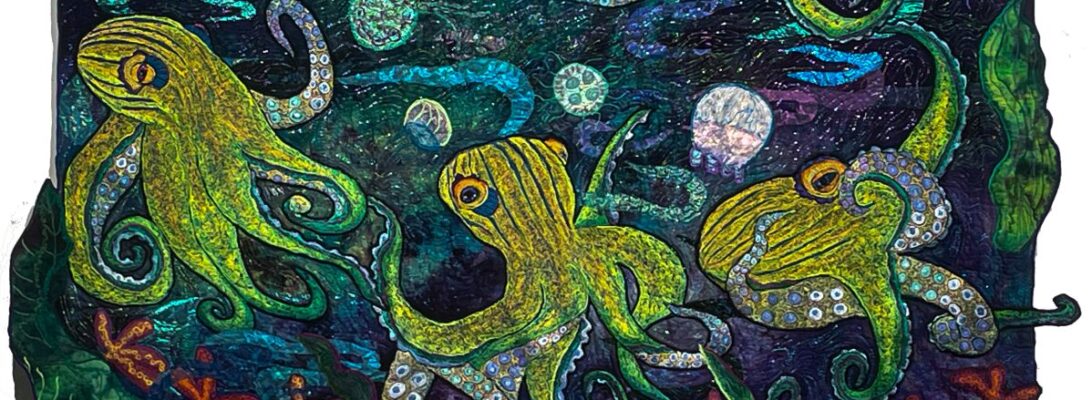
You know I go crazy over oil paint stick rubbing. My first tries with rubbings were not successful. But at this point, I use them regularly to texturize backgrounds. Mostly I use commercial rubbing plates. They’re pretty and flexible. But they’re not very big. The technique lends itself to smaller pieces. They’re fun. But covering a half yard of fabric with a 6″ square design takes forever

This was a leftover piece for it. I love it but it’s just too small. And I wanted a piece that would give me perspective on the river I wanted to build for my frog river.

I love this background. I found I had a leftover frog and dragonfly, and they suited each other quite well. But the fabric didn’t feel enough like a river. It needed water and rocks.
. Unfortunately, I haven’t found any rock rubbing plates.That just meant I wasn’t looking in the right place. Lowes has some rock backsplash tile I’d purchased. I love the texture.
Here’s the extra rock tiles I found. They are backsplash tiles from Lowes. They are on a thread mesh, but they are real rocks.



Rivers are often defined by the pebbles at the bottom. So I decided to build my river with some rock rubbings.
So I went back to Lowes. In the backsplash section, I found a collection of rock tiles in different sizes.



I also picked some rubbing plates that make good river foliage.

I drew some chalk lines to show me where to put the river. Then I began with the smallest rock tile

I went to the larger rocks landing at the bottom. Then I rubbed blue and purple ripples through the river area.

This is subtle. But I do like it. Here the frog and the dragonfly fit into the river and sky. I’m planning on minnows and cat tails along the edges.



I finished off the composition with water patterns over the rocks. Then I added a layer of blue and green sheers for that wet look. I can hear the water running
What’s the take away? I can build depth into my piece by making a path that starts near me and gets smaller as it retreats. I also can find stones and tiles that pass as rubbing stones at any good hardware store. And I can make a river out of a paint stick, a backsplash of rocks, and a water rubbing plate on top of them. That’s a lot to ask of a piece of fabric and some paint. But we all know that oil paint stick-rubbed fabric is a magic of its own.
Check out this earlier blog on working with oil paint sticks if you’d like a tutorial on using paint sticks.







































